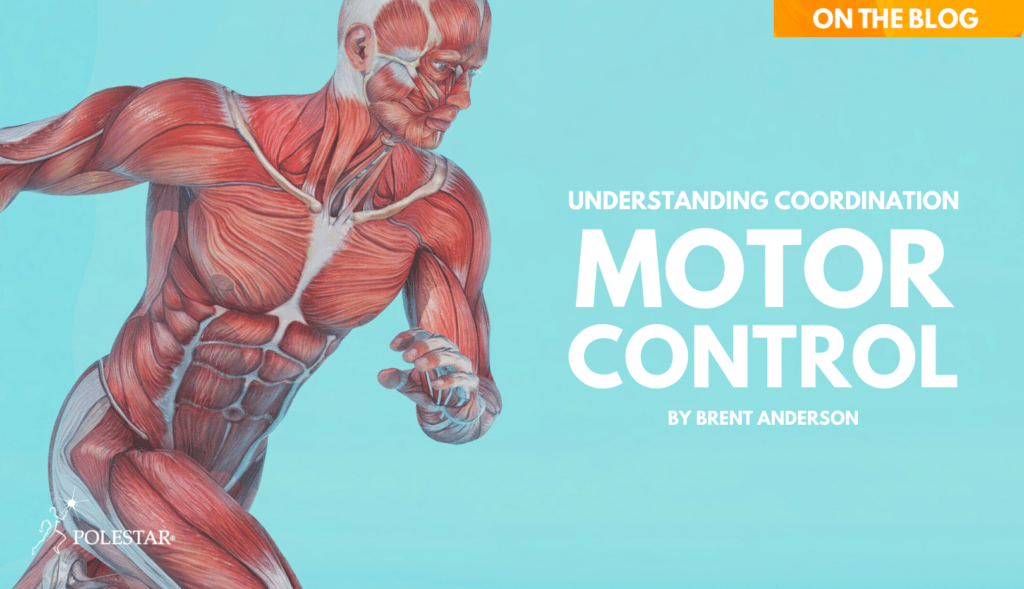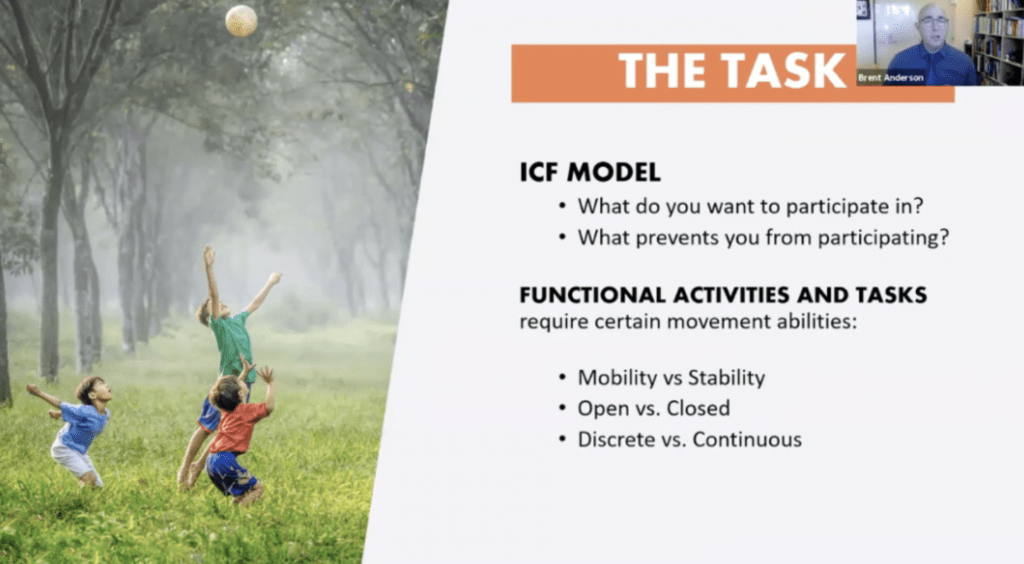
Polestar Pilates Teacher Training not only teaches you how to teach exercise choreography but also to see and evaluate the biomechanics of movement, and understand coordination and motor control. This excerpt is from Pilates Hour, a free webinar series hosted by Dr. Brent Anderson that broadcasts weekly.
Brent Recommends Anne Shumway-Cook’s Book “Motor Control”: I always recommend this addition to your movement library especially if you are interested in movement science and motor control. – Brent
Questions:
How do the principles of coordination relate to the quality of movement versus the quantity of movement?
Where does “Awareness” fit into movement integration?
How do alignment, mobility, control, and load relate to understanding coordination and motor control?
What is the best way to understand coordination to optimize our teaching strategies as Pilates teachers?
How is movement learned in the best way possible for long-term retention?

Motor learning has to do with the awareness of internal and external feedback provided both by the Pilates teacher and also from inside the client.
Movement integration is the principle that synthesizes all the Principles of Movement. It gives us the tools and understanding for new movement acquisition and learning new strategies to replace older and less efficient ones. As we better understand coordination and the science of motor control and motor learning, we start to use a different set of tools than what might traditionally be used in the fitness, athletic, and rehabilitation sciences.
How do we create an environment that allows someone to learn new movements most effectively?
We often see clients come into the studio with guarded, compensated movement that continues to plague them with an unnecessary expenditure of energy. This can cause a predisposition to things like repetitive strain problems or injuries from those old patterns.
Think about how you might always cross your leg right over left when you sit – this creates a torsional force in the body and the tissues adapt to this movement or posture from the daily habits we might have. Improving movement is not necessarily about increasing flexibility, range of motion, or strength, but learning to take a different look at how we in the Pilates environment can really optimize the client’s understanding and learning experience.
Motor Control is this mixture of the individual, the task, and their environment. When the three of these are working together synergistically, we see movement that has both quality and effectiveness. (Motor Control: Anne Shumway Cook).

The Individual: Action, Perception, Cognition
Action: We define movement in terms of human actions or tasks, whereas we can define motor control as the science that tries to identify how the many degrees of freedom are controlled pertaining to human actions.
-Anne Shumway-Cook
Some examples of human action are getting the mail, taking the dog for a walk, and putting on clothing. You can imagine the almost infinite possibilities in our bodies of the timing of doing simple activities such as these or another example, touching your ear. The arm can go in many different patterns, perhaps millions, in the attempt to touch the ear. How does the body navigate that?
It used to be believed that we were purely reflexive animals. For example, if we step on something sharp and have a reciprocal reflexive response, the leg that is not stepping on something sharp presses down, and the leg that is stepping on something sharp lifts up. It’s the same if you touch something hot.
Then the science moved to a more hierarchical perspective where individuals think about things with the cortex (brain), have desires to do things, and send commands to the body to do them. For example, if you are thirsty you are going to grab your cup and use a “Motor Plan” to bring the cup to your lips and take a sip of water.
Consider the act of signing your name on a small piece of paper, which uses a different set of fine motor skills as compared to drinking from a glass. When I attempt to sign my name on a big chalkboard, I end up using different muscles and different strategies that result in the same signature (hopefully). What if I tried to sign my name with my foot?
Perception: The integration of sensory impressions into psychologically meaningful information.
What is it that we perceive? Where does the sensory information come from? What do we see, hear taste, and smell, what do we feel in our skin and proprioception – where is the body in space? Where are the shoulders and where is the head?
As Pilates teachers, we are essentially teachers of awareness and perception. That is important!
My original physical therapy research was looking at perception. Does the client believe they are going to get better? Clients who believed they would get better had an 80% likelihood that they would indeed show signs of improvement with their low back pain. Individuals who believed they would not get better also had an 80% correlation that they would indeed not get better. My challenge was to see if I could shift their perception to one where they were able to move successfully without the pain. When they had a successful movement experience without the pain and their perspective shifted to one of “I believe I can move without pain”, it made all the difference.
Cognition: Includes attention, motivation, and emotional aspects of motor control.
This is something I want – I am afraid of falling and don’t want to – It always hurts when I do this movement… We are constantly problem-solving to get what we want.
Think of the language we use with clients: be careful, don’t fall down, don’t let your legs go too low, and don’t spill the milk. This kind of language doesn’t tell them what you would like them to do, nor how to do it. And think of the language we use to communicate with ourselves.
We sometimes use language that creates a negative perception or concept that then impacts the clients cognitively and eventually impacts their actions. And this is why at Polestar we are so fanatical about avoiding the “negativity” in our teaching language. We practice the skill of being able to tell clients what we want them to do or to see in their movement and asking them “What do you notice?” rather than telling them “Your pelvis is out of alignment”. And if they are out of alignment and don’t notice it, we can give them more useful information like “lengthen your right waist” to help them gain better alignment and eventually an internal awareness.
How do we manipulate the environment or the task at hand to be able to impact the individual’s perception, belief, and cognition of movement?
Improving awareness is going to be one of our most powerful tools. We speak about this in the rehabilitation world, mainly in the neurological rehabilitation field however, I feel this should be a key focus of language and strategies for anyone teaching or facilitating movement. Our job is to help our clients turn external feedback cues and information into internal awareness so they can become more efficient and more unconsciously competent.

The Task
One of the first questions I ask my clients is “What do you believe you should be participating in that you believe you are not able to participate in?”.
In the International Classification of Function Model “ICF”, we ask them “What do you want to participate in”? If they wish to participate in golf at 90 years old, I have to be thinking “what does this individual’s body require to be able to play golf at 90 years old?
And we need to be mindful of the “gap”. Where are they today, where do they see themselves, where they want to be, and how do we help them develop that task that is part of their ability to function and reach their goals.
Mobility vs Stability
What is the mobility and stability required for the task?
If you are on a flat ground performing a movement it will have a different motor program than if you perform the same movement on an uneven surface while someone is throwing things to you.
We often make tasks too basic and unstimulating and don’t progress the activity or change the environment. The more complex and more variables involved with the movement, the better they learn in the long run. These factors influence how an individual learns to move. It needs to be appropriately challenging from the start.
When we stop babying our clients and create an environment that may be a little more challenging, they gain independence and begin to do something that they believed they couldn’t do.

The Environment
How does the Environment affect movement performance?
Consider the weight of an object such as the weight of a backpack. Hiking with a 30lb pack will potentially shorten the distance someone can hike compared to hiking without a pack. Or consider lighting – when it gets dark, movement can become more challenging for some individuals. When the darkness of the environment takes away the sense of eyesight, they are relying on their vestibular and proprioceptive systems which may be deficient.
We need to take into consideration:
- The weight of different props or devices
- Different textures of surfaces (playing basketball on a rubber court verses wooden or cement court)
- Practicing Pilates in a dimly lit studio
- Air quality or wearing a face mask
- Exercising outside or inside with different temperatures
- Uneven surfaces
The surface has a lot to do with the environment and so does the temperature. Temperatures can impair the way that we move. If it is very hot and humid or too cold the body can have a difficult time moving.
The Takeaway
All three aspects of motor control, the individual, the task, and the environment are all important to us as movement teachers and analysts.
Is there a right and a wrong way to move? No, there are an infinite number of ways to perform a task or movement. The question we should be asking is how do we as movement teachers assess our client’s needs, create the optimal environment for learning, and support them in accomplishing any task they may throw our way?
We need to use tools of interviewing, informative cueing, assistance, props, manipulating load, tempo changing the environment, and challenging clients with choreography. If we do this, we and our clients stay engaged and energized and clients accomplish not only their original goals but new goals they didn’t even know they had.
Brent Anderson PhD, PT, OCS, NCPT is a Physical Therapist, Pilates Educator and Founder of Polestar Pilates. Brent received his degree in Physical Therapy at the University of California, San Francisco in 1989 and his PhD. in Physical Therapy at the University of Miami in 2005. His doctoral thesis explored the impact of Pilates rehabilitation on chronic low back pain using psycho-emotional wellness and quality of life measures. He is currently Assistant Professor faculty at the University of Saint Augustine, College of Rehabilitative Sciences.




